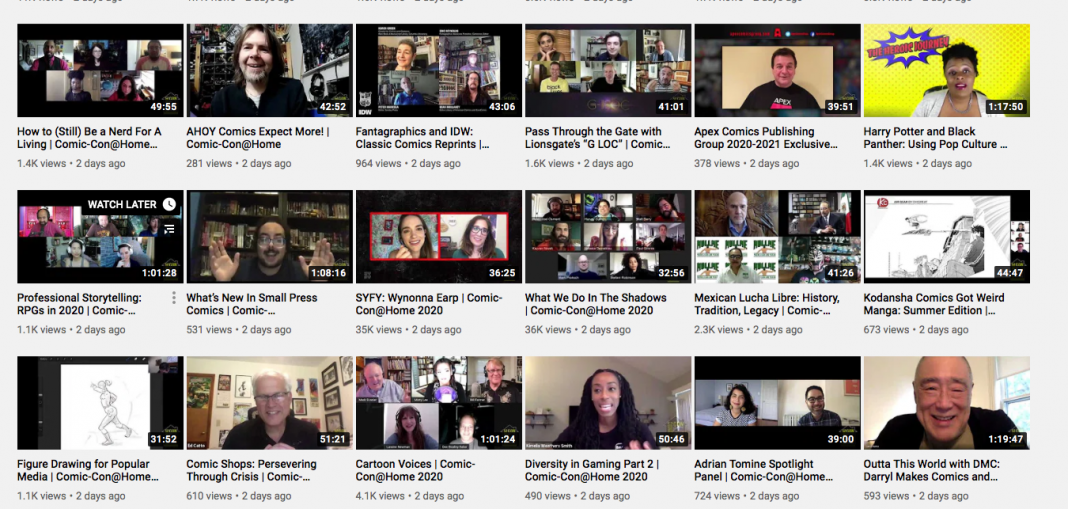Just like in the non-virtual Comic-Con, the Monday after was a relatively quiet day for the comics industry…I guess everyone was having a virtual moment by the pool and a lie down. But the media has spoken, declaring the event “a bust.”
According to data from social media analytics firm ListenFirst, tweets that mentioned Comic-Con@Home were down 95% from 2019’s live convention — just 93,681 tweets over the five-day event, against 1,719,000 tweets in 2019. Tweets about the top 10 TV events were similarly down 93%, and tweets about the top 5 movie panels were down a shocking 99%.
Views on YouTube, which hosted the vast majority of Comic-Con’s panels, were scarcely better. Average views for Thursday, which have had the longest period for people to watch them, are hovering around 15,000 per panel. On the one hand, that’s over double the capacity for Comic-Con’s biggest live venue, the famed Hall H. On the other hand, 😬.
While a lack of tweets is sad, I think holding these YouTube numbers as a failure is definitely looking at things the wrong way. The programming this year was diverse and fresh and the zooming in from home allowed panelists who never go to Con to have their say. And the numbers for comics based panels are way way above what they would have reached in person. The Eisners video alone has 16,000 views – I’d estimate that about 500-800 people attend in person.
Other comics based panels have viewerships in the hundreds or even thousands, something that only a few superstar DC or Marvel panels would have achieved in person. Even the Klingon Lifestyle panel has 2700 views! I guarantee that this is more exposure than in years past!
While nothing can replace the sweaty sturggle of pushing through a crowd to search for an exclusive Aggretsuko backpack, the virtual con floor allowed people to go browse many individuals with online stores, and some of the tweets I saw indicated brisk sales. Definitely something to investigate further.
Granted, we are all blasé about the world through a zoom screen, and the lack of live fan interaction was a minus for the media panels and the overall experience. Zack Snyder actually pulled off a live panel at a spin-off event called Justice Con, and interacted with viewers. So it can be done.
But as even mean old Variety admits, pulling off a huge virtual event on a few months notice for an organization that specializes in real world events was quite a task. Hopefully we’ll never have a second chance to improve things.
It should also be noted that CCI, the organization that puts on SDCC, did this with very little income for the entire year. I’m told some of the events were sponsored, but it’s likely that CCI’s warchest is being used for things like paying employees and gearing up for a return to live events.
If anything, going virtual allowed many people to experience Comic-Con in a different way. And it proved once and for all that we’re not sick of SDCC! We love it and miss it and can’t wait for the day when we can all breathe the same non-COVID-19 infected air.
The bar for virtual events is constantly being lifted however. We’ll have the Warner Fandome on August 22nd, and ReedPOP has announced Metaverse, their own virtual convention on August 13-16th. Plant your butt in your comfy chair and keep those URLs on standby!









Man, the panel of librarians who’ve been Eisner Award judges has nearly 4000 views. Meanwhile, if that had been live, I’m guessing maybe…50 attendees? So no complaints here!
The ability to watch ALL the panels you want to see without worrying about time-slot conflict was a blessing.
Comments are closed.